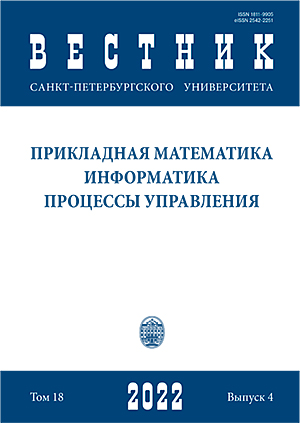Working groups: Creation and management
DOI:
https://doi.org/10.21638/11701/spbu10.2022.414Abstract
In modern management, one of the most popular and effective approaches to organizing activities is the creation of temporary working groups. An important indicator is the effectiveness of such groups, which strongly depends on the internal structure of the working group and the relationship between team members. For the effective functioning of the group, it is necessary that the group consists of a leader and subordinates. The artificial appointment of a team leader often proves ineffective. The article solves the problem of dividing the team into working groups, taking into account the relationship between individual personalities. Two algorithms are proposed: the first one divides the team into separate groups of possible leaders and subordinates, the second one makes effective working groups. The effectiveness of the group is calculated based on the ee efficiency function, which takes into account interpersonal relationships. Practical and numerical experiments were carried out to verify the adequacy of the model.
Keywords:
working groups, adjacency matrix, hierarchical clustering algorithm
Downloads
References
Downloads
Published
How to Cite
Issue
Section
License
Articles of "Vestnik of Saint Petersburg University. Applied Mathematics. Computer Science. Control Processes" are open access distributed under the terms of the License Agreement with Saint Petersburg State University, which permits to the authors unrestricted distribution and self-archiving free of charge.





